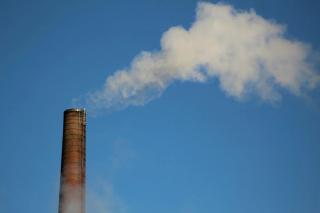
MiQ methane emissions audit – LNG storage and regasification terminal
- Client Name
- Confidential
- Location
- UK

Challenge
SLR were approached by the operator of a UK-based LNG storage and regasification facility to conduct a methane emissions performance audit against the MiQ Standard. The facility, the largest LNG regasification terminal in Europe and eight largest globally is capable of supplying approximately 20% of the UK’s gas demand. As an accredited MiQ auditor, SLR were tasked with undertaking a detailed assessment of natural gas production at facility level against the MiQ Standard for liquefied natural gas.
MiQ Standard is a standalone framework to assess the methane emissions intensity and carbon (CO2e) intensity at the asset level from each stage of the natural gas supply chain and some stages of the oil and natural gas liquids supply chain. The standard audits against three principal elements, methane intensity, company practices and the deployment of monitoring technology.
Solution
A multidisciplinary SLR team comprising Air Quality, Environmental Management Permitting and Compliance, and Energy Advisory:
- Reviewed and audited the facilities emissions inventory and methane intensity calculations. The emissions inventory included safety venting, system purges and equipment leaks and were calculated either by emissions factors, equation of state analytical calculations or direct measurement using optical gas imaging camera.
- Audited the company practices that covered minimising methane emissions, this included both a review of internal processes and documentation governing intended and unintended releases to air, as well as conducting staff interviews and observing operations to assess that day-to-day activities were in accordance to documented processes. This exercise included a comprehensive review of internal & regulatory documentation covering:
- Environmental permitting regulations (EPR) permit and variations
- Venting and fugitive emissions policy
- Preventative and corrective maintenance plans and processes
- Managing LNG tank pressures
- Assessed the current monitoring technology deployment on the facility, both at the facility and the source level, to understand what top-down and bottom-up technologies were being employed to monitor unintended methane emissions. This element of the audit is undertaken to ensure that active management of methane emissions is being undertaken through the identification of unintended sources and the followed up with appropriate corrective actions.
Impact
The audit provided assurance that the methane intensity was being calculated accurately and found that the procedures were fit-or-purpose, operations were being carried out effectively and that there was strongly embedded safety culture.
SLR suggested a number of recommendations to assist the operator with enhancing and refining data reporting and action tracking and identified areas where process documentation could be further developed. The temporal frequency of facility scale monitoring was identified as an area where increased cadence could be beneficial in improving top-down bottom-up reconciliation.
